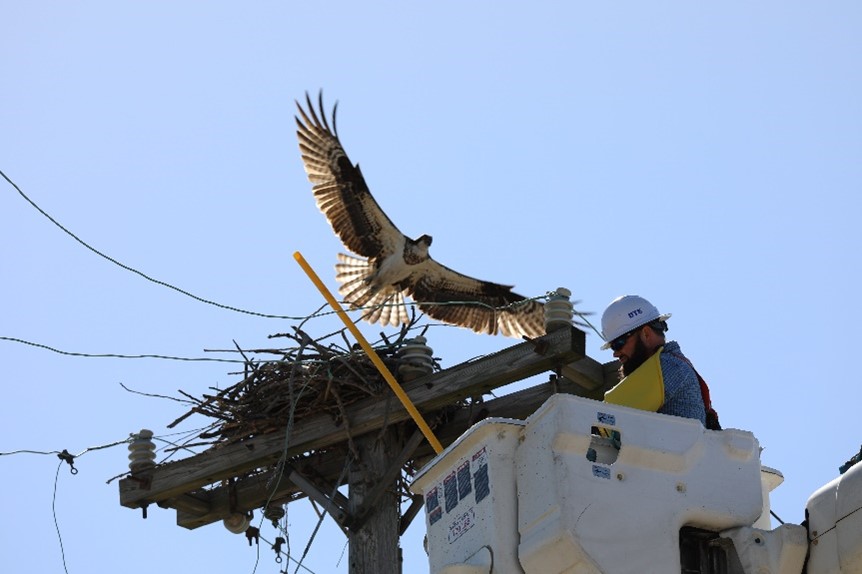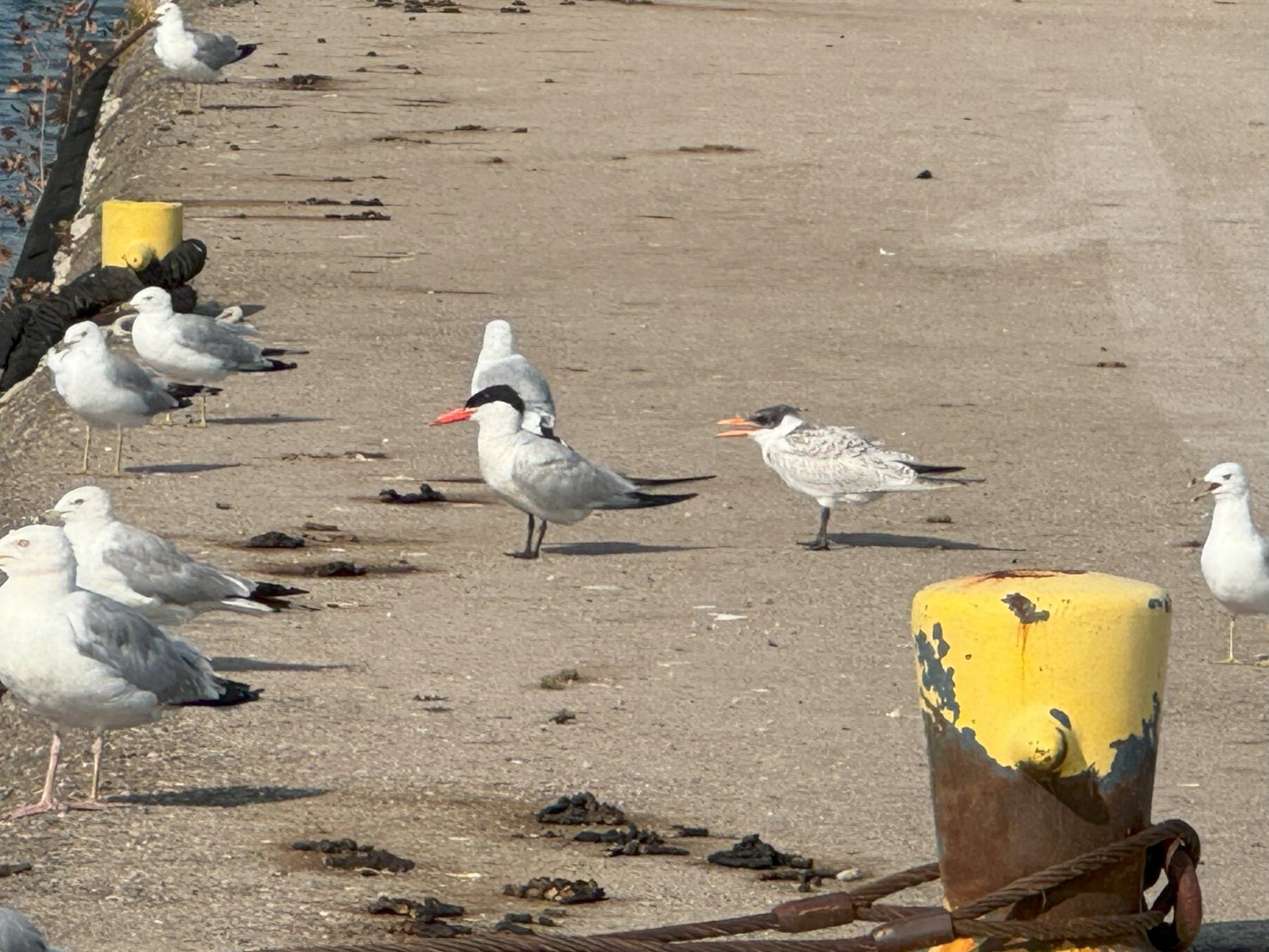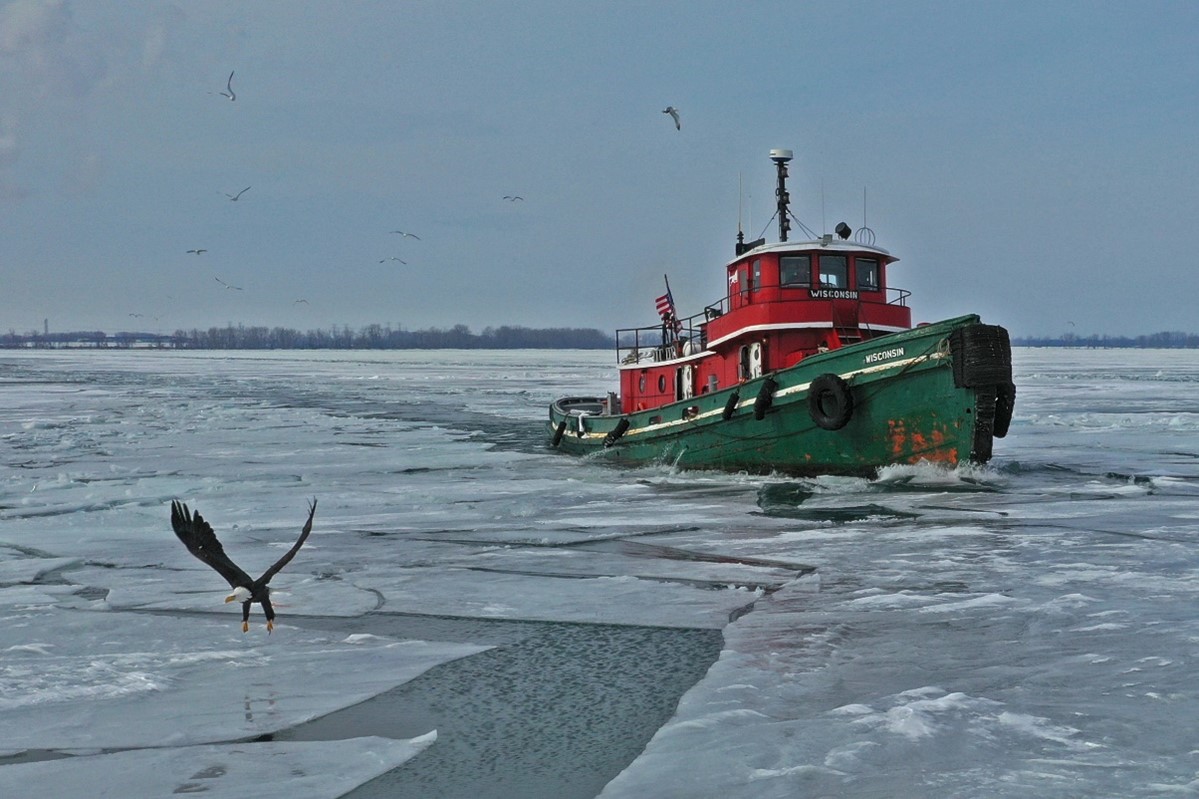By John Hartig
Historically, the prevailing thinking was that society could have either a healthy economy or healthy biodiversity, but not both. But over time many businesses have proven this wrong. Michigan’s Port of Monroe is one, showing how a thriving maritime industry can go hand-in-hand with exceptional biodiversity.
Nestled on the banks of the River Raisin in Monroe, Michigan is the Port of Monroe — what mariners affectionately call the “Biggest Little Port” on the Great Lakes. However, this St. Lawrence Seaway System node not only welcomes limestone, synthetic gypsum, natural gas pipeline sections, steel coils, wind energy components and containers, but it also welcomes wildlife.
The port is 35 miles south of Detroit, Michigan and 17 miles north of Toledo, Ohio. It is Michigan’s only port on Lake Erie and is the gateway to the state’s far-reaching multimodal transportation network.
In 2023, the port received about 2.5 million tons of cargo. The port can transfer cargo between rail, truck or vessel. In 2023, the port received $16 million in state and federal grants to build a terminal that will allow the port to handle container shipments, the most common and efficient shipment method for goods. This will make Port of Monroe the first container terminal in Michigan when it comes online in 2025, making it one of the most state-of-the-art ports on the Great Lakes.
The Great Lakes Seaway Partnership has documented that the Port of Monroe and its maritime commerce support: 1,659 jobs, $96 million in economic activity, $121.1 million in personal income and local consumption expenditures and $38.5 million in federal and state tax revenue.
Port of Monroe is also getting a reputation for its exceptional wildlife
Western Lake Erie and the Port of Monroe are situated at the intersection of the Atlantic and Mississippi flyways. The flyways are ideal for migrating birds because they provide food, water and shelter. The Port of Monroe happens to be surrounded by approximately 1,742 acres of conservation lands — Sterling State Park, Ford March Unit of the Detroit River International Wildlife Refuge, and wetland and prairie habitats that are part of the Monroe Power Plant — and the waters of western Lake Erie.
Lake Erie has been recognized for its biodiversity in the North American Waterfowl Management Plan (one of 67 areas of continental significance to North American ducks, geese and swans), the Canada-U.S. Lake Erie Lakewide Management Plan, and the Lake Erie Biodiversity Conservation Strategy produced by The Nature Conservancy. It has been identified as a priority area for waterfowl conservation by Ducks Unlimited.
Western Lake Erie and the lower River Raisin are a magnet for waterfowl because they provide stopover habitats where birds rest, refuel and find shelter during their migration between breeding and wintering areas. Such sites are critical for bird survival, as migration is the most dangerous part of their life cycle.
“More than 300,000 diving ducks like canvasbacks, bluebills, redheads and mergansers migrate through the area each year,” said Richard Micka, a lifelong outdoorsman and member of the River Raisin Public Advisory Committee and the International Wildlife Refuge Alliance. “We also have dabbling ducks that do not dive beneath the surface, including blue-winged and green-winged teal, pintails, black ducks and mallards. It should be no surprise that this area has long been a birding and waterfowl-hunting mecca.”
To help support osprey recovery efforts, the Port of Monroe worked with DTE Energy to relocate an active osprey nest at the port and then constructed two osprey platforms on its property. These platforms provide nesting habitat and have been successful in attracting this “species of special concern” in Michigan.

Osprey nest at Port of Monroe (credit: Port of Monroe).
The Port of Monroe also welcomes many other avian visitors. For example, Caspian tern, a threatened species in Michigan, has been a regular visitor to the port that inspires a sense of wonder in both port workers and deckhands from visiting ships.

Caspian terns (black head and orange beak) visiting the Port of Monroe (credit: Port of Monroe).
Lake Erie has the highest biological diversity and fish production of all the Great Lakes, and as a result, one of the largest freshwater fisheries in the world. Located at the mouth of the River Raisin is the 3,279-megawatt Monroe Power Plant owned by DTE Energy with Wildlife Habitat Council-certified habitats. This plant is literally in the shadow of the port. The thermal discharge from the plant prevents the water from always freezing in the winter and attracts large numbers of fish from Lake Erie’s world-class fishery. This, in turn, attracts fish-eating bald eagles — often more than 100.
The interest in seeing so many bald eagles in one place has led to an annual bald eagle tour sponsored by DTE Energy and the U.S. Fish and Wildlife Service’s Detroit River International Wildlife Refuge. These tours have been held on power plant property for 14 consecutive years. Interest in seeing our National Symbol is so great that individuals have to be selected by lottery.

Bald eagles roosting at the Monroe Power Plant, 2017 (credit: Jake Bonello).
“We have seen up to 200 bald eagles while we are breaking ice with a tugboat at the port in winter,” said Paul LaMarre, director of the Port of Monroe. “It often feels like we are in a wildlife sanctuary, instead of a maritime port. This is something I wish more people could experience.”

Bald eagle off Port of Monroe (credit: Port of Monroe).
Not only is the Port of Monroe growing its operations and maritime economy, but it is also a partner in cleaning up the River Raisin Area of Concern and stewarding its natural resources.
“The Port of Monroe is a shining example that industry and environment can coexist,” said LaMarre. “The synergy of community, wildlife, and commercial waterway is at the heart of what we as a public port are striving to protect.”
John Hartig is a board member at the Detroit Riverfront Conservancy. He serves as a Visiting Scholar at the University of Windsor’s Great Lakes Institute for Environmental Research and has written numerous books and publications on the environment and the Great Lakes. Hartig also helped create the Detroit River International Wildlife Refuge, where he worked for 14 years as the refuge manager.
























































